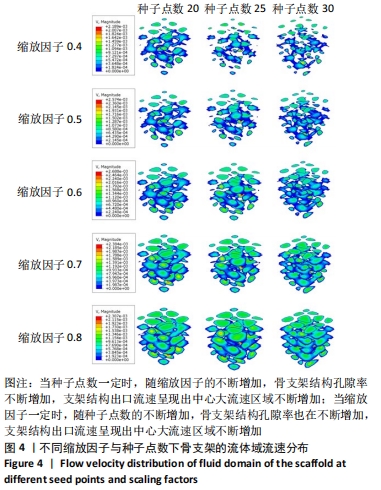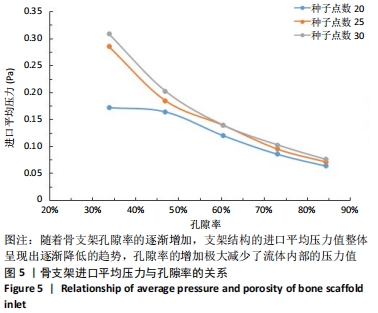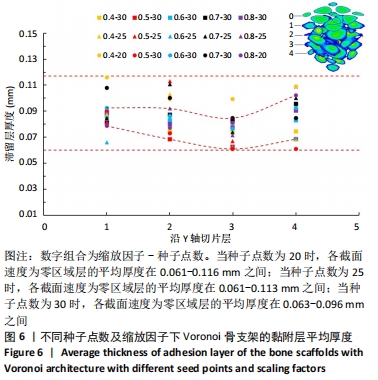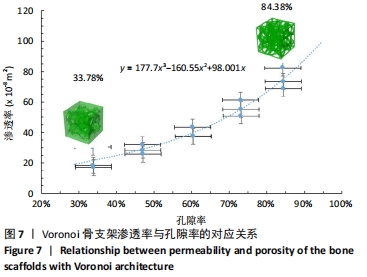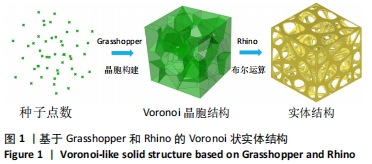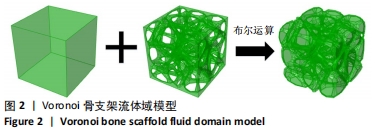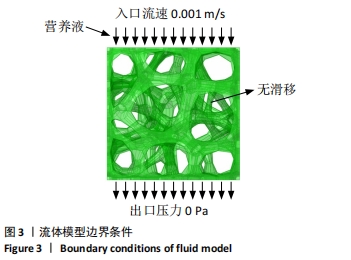中国组织工程研究 ›› 2022, Vol. 26 ›› Issue (28): 4472-4476.doi: 10.12307/2022.300
• 组织工程骨材料 tissue-engineered bone • 上一篇 下一篇
空间泰森多边形骨支架黏附性及渗透率分析
武 力,黄 伟,李学涛,李盼盼,张凯航,沈智元
- 大连交通大学机械工程学院,辽宁省大连市 116028
Analysis of adhesion and permeability of bone scaffold with Voronoi architecture
Wu Li, Huang Wei, Li Xuetao, Li Panpan, Zhang Kaihang, Shen Zhiyuan
- School of Mechanical Engineering, Dalian Jiaotong University, Dalian 116028, Liaoning Province, China
摘要:
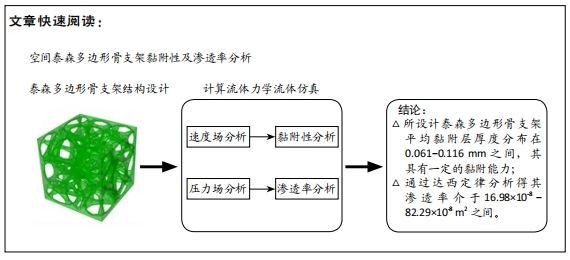
文题释义:
渗透率:描述复杂微孔结构骨支架渗透能力的重要参数,可用于评判骨支架运送细胞、营养物质及代谢废物的能力。
黏附性:指细胞在骨支架内部的附着程度,较好的黏附性可以使细胞在骨支架内大量附着,更好地促进骨组织的再生。
泰森多边形:又称Voronoi图,是关于一个点集的空间划分,划分之后的每个点对应一个多面体的Voronoi 区域,这个区域是距离该点最近的一个区域,并且各个区域无重叠无缝隙地拼接在一起。
背景:骨组织工程研究发现,Voronoi骨支架黏附性和渗透率是影响骨组织工程支架的重要参数,良好的黏附性可以保证骨细胞在支架内部的黏附,从而促进骨组织的再生,而优异的渗透率可以促进营养物质及代谢废物在体内的运输。
目的:研究Voronoi骨支架的黏附性及渗透率。
方法:以Voronoi骨支架为研究对象,通过Rhino软件对其结构进行了建模,同时借助计算流体力学(CFD)方法对骨支架内部的渗透率及黏附性进行了分析,设定种子点数为20,25,30,缩放因子分别为0.4,0.5,0.6,0.7,0.8,探讨孔隙率与渗透率之间的对应关系。
结果与结论:①通过Rhino软件设计得到的Voronoi骨支架结构,平均黏附层厚度分布在0.061-0.116 mm之间,其具有一定的黏附能力,其孔隙率在很大程度上是由缩放因子决定的,随缩放因子的不断增加其孔隙率呈上升趋势,在所选结构设计参数范围内,当缩放因子为0.4时,不同种子点数的支架结构孔隙率均最小,分别为33.78%,33.87%,33.90%;当缩放因子为0.8时,不同种子点数的支架结构孔隙率均最大,分别为84.28%,84.35%,84.38%。②孔隙率的增加对支架结构的渗透率产生了明显影响,随孔隙率的增加,骨支架结构的渗透率呈上升趋势,在所设计支架结构中随孔隙率的变化,其渗透率由16.98×10-8 m2增长到82.29×10-8 m2。③对支架结构的孔隙率与渗透率之间的关系进行拟合,得到孔隙率与渗透率的关系方程,为骨支架渗透率的预测提供了依据,为复杂结构骨支架生物性能的分析提供了参考。
https://orcid.org/0000-0001-9022-4865 (武力)
中国组织工程研究杂志出版内容重点:生物材料;骨生物材料;口腔生物材料;纳米材料;缓释材料;材料相容性;组织工程
中图分类号:
